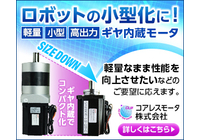Basic Technology of Brushless Motors - Beginner's Edition #Brushless #BrushlessDC
We will introduce the basic knowledge and essential elements of brushless motors. Let's learn the fundamentals of brushless motors. #BrushlessBasics
A brushed DC motor is a type of motor that has electrodes called "brushes" and a commutator, and it mechanically switches the current by making contact between the two to rotate the motor. In contrast, a brushless motor uses an electronic circuit made up of power elements such as transistors instead of mechanical contacts like "brushes" and "commutators," and it rotates the motor by electrically switching the current.
basic information
Currently, high-efficiency motors, including electric vehicles, are in demand. The most efficient motor at this time is the brushless DC motor. In a brushless DC motor, the rotor is a permanent magnet, and the stator is a coil. Compared to DC motors, the fundamental properties such as the rotation principle and output characteristics are essentially the same, differing only in which component rotates—the coil or the magnet. Since the coil does not rotate, brushes and commutators are not needed. However, it is necessary to detect the rotor's rotational position using methods such as Hall elements or back electromotive force to switch the current to the coil. To achieve brushlessness, this current switching must be done without mechanical contacts. Therefore, to drive a brushless DC motor, a driving circuit using semiconductor devices is employed to switch the coil current without using mechanical contacts. The brushless DC motor has developed alongside advancements in semiconductor devices and cannot operate without a dedicated driving circuit, requiring one driver for each motor. The brushless DC motor is often referred to simply as a brushless motor, dropping the "DC."
Price information
Prices vary depending on the manufacturer and specifications.
Price range
P1
Delivery Time
P1
Applications/Examples of results
Brushless DC motors have numerous advantages, such as high efficiency, compact size, operation solely on power supply, and low manufacturing costs. However, they also face challenges such as noise from brush friction, the generation of sparks and electrical noise, and a limited lifespan due to brush wear. The motor that addresses these issues is the brushless DC motor. Brushless DC motors drive a permanent magnet rotor using the magnetic force from the stator winding circuit, and the current switching that was performed by the brushes and commutator in brushed DC motors is achieved through sensors and electronic circuits. This motor became possible only with advancements in surrounding technologies like semiconductors, and it retains the characteristics of a DC motor in that current and torque, as well as voltage and rotational speed, are proportional. Its structure incorporates the excellent features of AC motors. Brushless DC motors are compact, high-power, long-lasting, and do not generate sparks or noise, making them widely used in applications ranging from computers to home appliances.
catalog(3)
Download All CatalogsRecommended products
Distributors
Coreless motors are engaged in the development, manufacturing, and sales of precision small motors, generators, and drivers, offering a wide range of products specialized in lightweight and energy-saving technologies through proprietary technology. 【Product Lineup】 - Coreless Brushless DC Motors - Cored Brushless DC Motors (ODM) - Small Geared Motors (ODM) - General-purpose Geared Motors (some ODM) - Gear-integrated Motors (Winner of the 36th Kanagawa Prefectural Industrial Technology Development Award) - In-wheel Motors for Electric Wheelchairs - Wheel Servo Motors (ODM) - Brushless Motor Drivers (some OEM) - Battery-powered AC Servo Motors (some ODM) - AC Servo Motion Controllers (ODM) - Renewable Energy Generators (some ODM) - Wind Turbines with EAT - IC Fan Motors - Conventional Axial Flow Fan Motors (ODM) - DC Blower Fan Motors (ODM) - Linear Motors














































